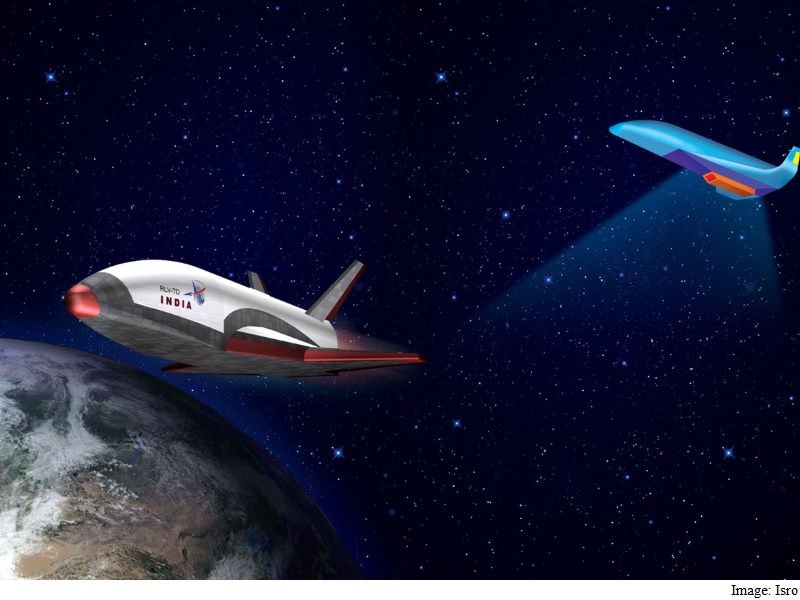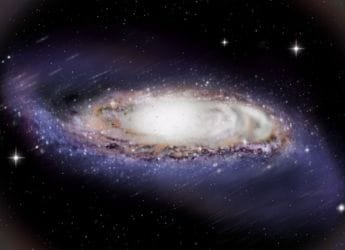- Home
- Science
- Science News
- Isro Successfully Tests Homegrown RLV as Mini Shuttle
Isro Successfully Tests Homegrown RLV as Mini-Shuttle

"We have successfully accomplished the RLV mission as a technology demonstrator. The lift-off was at 7.00am from the first launch pad here," Indian Space Research Organisation (Isro) director Devi Prasad Karnik told IANS.
The mini-shuttle returned and plunged into the Bay of Bengal, about 500km away from the coast, after a 10-minute flight at about 70km above the Earth.
The 1.7-tonne RLV was launched from the spaceport in Sriharikota in Andhra Pradesh, about 80 km of Chennai on the east coast.
The mission has qualified India to enter the elite club of space-faring nations like the US, Russia and Japan, which developed and used RLVs for their space missions over the years.
A seven-metre rocket with a booster, weighing 17 tonnes, including nine tonnes of solid propellants (fuel) with the aircraft-shaped RLV was used as a flying test bed to evaluate technologies the space agency developed to reduce the cost of launching satellites into the Earth's polar and geo-stationary orbits.
The mission has enabled Isro to collect data on hypersonic speed, autonomous landing and powered cruise flight using air-breathing propulsion.
"The long-term objective of this mission is to reduce the launch cost by 80 percent of the present cost by using a reusable vehicle," Vikram Sarabhai Space Centre (VSSC) director K. Sivan told IANS ahead of the test.
Space agencies spend on average $20,000 (roughly Rs. 13.45 lakhs) per kg to build and use medium-to-heavy weight rockets to launch satellites into the Earth's orbits.
The space agency's telemetry, tracking and command network (Istrac) in Bangalore will collect the data from the vehicle.
Get your daily dose of tech news, reviews, and insights, in under 80 characters on Gadgets 360 Turbo. Connect with fellow tech lovers on our Forum. Follow us on X, Facebook, WhatsApp, Threads and Google News for instant updates. Catch all the action on our YouTube channel.
Related Stories
- Samsung Galaxy Unpacked 2025
- ChatGPT
- Redmi Note 14 Pro+
- iPhone 16
- Apple Vision Pro
- Oneplus 12
- OnePlus Nord CE 3 Lite 5G
- iPhone 13
- Xiaomi 14 Pro
- Oppo Find N3
- Tecno Spark Go (2023)
- Realme V30
- Best Phones Under 25000
- Samsung Galaxy S24 Series
- Cryptocurrency
- iQoo 12
- Samsung Galaxy S24 Ultra
- Giottus
- Samsung Galaxy Z Flip 5
- Apple 'Scary Fast'
- Housefull 5
- GoPro Hero 12 Black Review
- Invincible Season 2
- JioGlass
- HD Ready TV
- Laptop Under 50000
- Smartwatch Under 10000
- Latest Mobile Phones
- Compare Phones
- Huawei Nova 15
- Huawei Nova 15 Pro
- Huawei Nova 15 Ultra
- OnePlus 15R
- Realme Narzo 90x 5G
- Realme Narzo 90 5G
- Vivo S50 Pro Mini
- Vivo S50
- Asus ProArt P16
- MacBook Pro 14-inch (M5, 2025)
- OPPO Pad Air 5
- Huawei MatePad 11.5 (2026)
- Huawei Watch 10th Anniversary Edition
- OnePlus Watch Lite
- Acerpure Nitro Z Series 100-inch QLED TV
- Samsung 43 Inch LED Ultra HD (4K) Smart TV (UA43UE81AFULXL)
- Asus ROG Ally
- Nintendo Switch Lite
- Haier 1.6 Ton 5 Star Inverter Split AC (HSU19G-MZAID5BN-INV)
- Haier 1.6 Ton 5 Star Inverter Split AC (HSU19G-MZAIM5BN-INV)

















